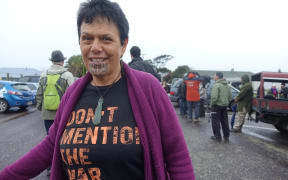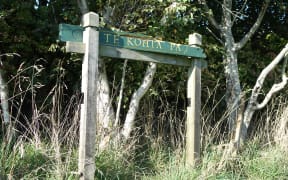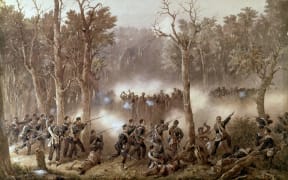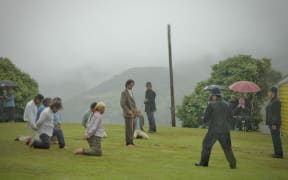One of the first Māori prayer books, held by the Henare family for generations, offers a glimpse of the battle of Ruapekapeka ahead of the first official New Zealand Wars commemorations.
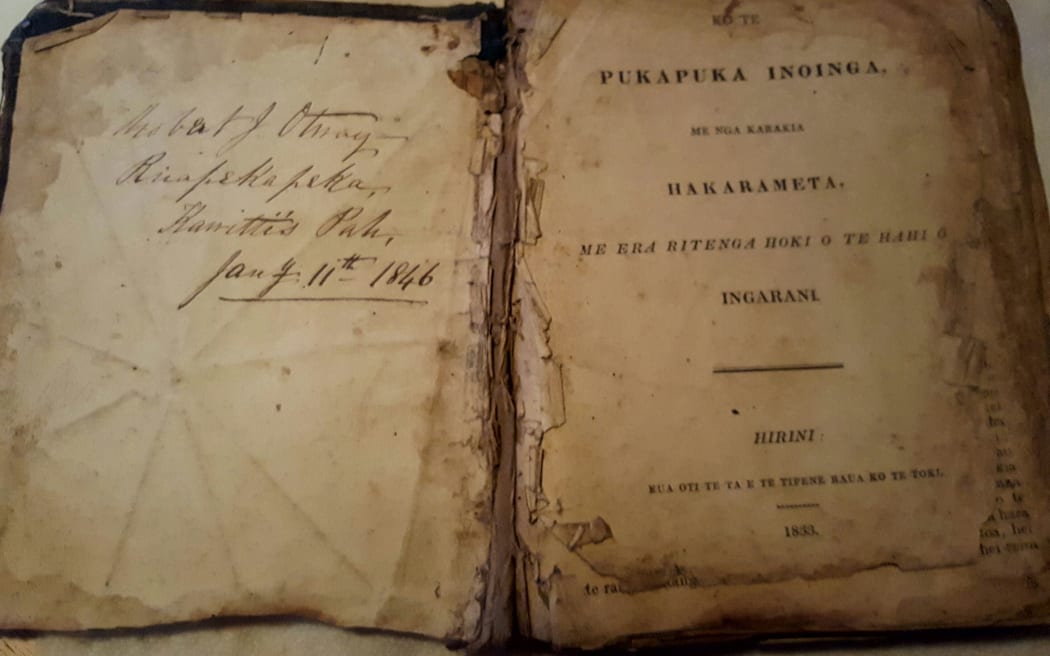
The inside of the prayer book, which was published in 1833. Photo: RNZ / Mihingarangi Forbes
The small brown book was published in 1833 and an annotation on the inside cover puts it at the battle on the day British troops captured the pā, which they found all but abandoned by Māori warriors.
Māori historian Reverend Hirini Kā said the revelation that the prayer book from the infamous battle still existed was exciting news.
"It's an amazing early edition - one of the earliest printed books in this country."
Ruapekapeka was the last battle of the Northern War campaign when it ended in January 1846.
The family of the late Sir James Henare are kaitiaki of the book. Peeni Henare unwrapped the taonga for RNZ.
"There's a writing on the inside saying that it was discovered on Ruapekapeka Pā, Kawiti's pā, 1846 ... most definitely that's at the conclusion of the battle.
"When the Pākehā went on to the pā they found this bible and the interesting thing is one of the theories is on the Sunday morning when the pā was stormed they could hear a bell ringing for church.
"Quite possibly there was a church service, and what kind of army attacks another army when they are praying? But this is a fragile piece that has been in the family for a long time now," he said.
A "today in history" recording played on RNZ in 1950 also makes note of a church service.
When the British stormed the pā on Sunday, 11 January 1846, they found it all but abandoned.
Chief Te Ruki Kawiti rushed to the front of the pā sending a volley of musket fire into the red coats. Twelve men were killed and another 29 injured.
Rev Kā said the story of the scripture book being found at Ruapekapeka fit with the kōrero that was known.
The first Māori New Testaments were printed on the Paihia Press in 1837 but the Kawiti prayer book was printed four years earlier in 1833 in Parramatta in Sydney.

The front cover of the prayer book. Photo: RNZ / Mihingarangi Forbes
Rev Kā said Māori were travelling back and forth very early on.
"I think living at the mission station over there, learning literacy, learning to read and write, seeking out whatever they could find and then over to England as quickly as they could as well."
Mr Henare, a native speaker of te reo Māori, was raised in the Ngāti Hine dialect and was familiar with the older language used in the book.
"So, for example, in the bible it uses upoko as the verse. This one doesn't use upoko and the reason for that is the te reo Māori used here is really before Christianity took a hold in this country."
Mr Kā said written Māori language was in its infancy in 1833.
"It's fascinating partly because it's really before the orthography had been settled - the 'ng' is used in some places, not in others. We hadn't even settled on an alphabet yet so it's some of the earliest printing in the country."
He said the story of such an old scripture book was even more incredible.
"The whakapapa in here - how many hands have touched this, how many whānau have prayed over this book, how many children have been baptised around this book - it's a story of a whānau, a hapū, an iwi and of New Zealand."
The commemorations of the New Zealand Wars are being hosted by the Northern tribes and will be held on 28 October.

